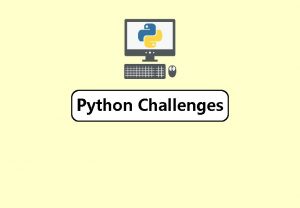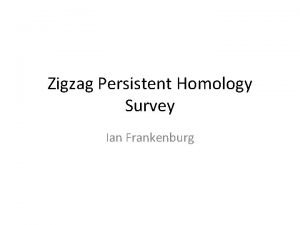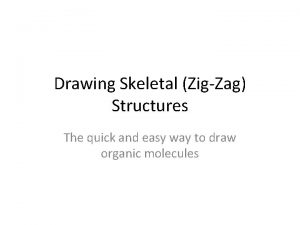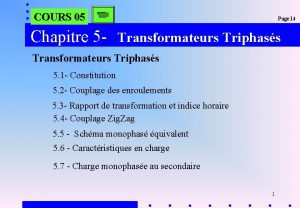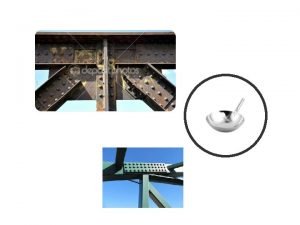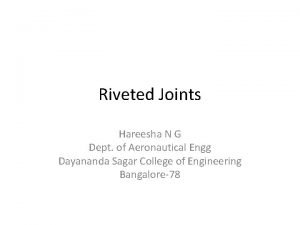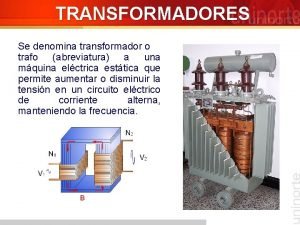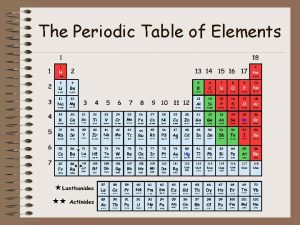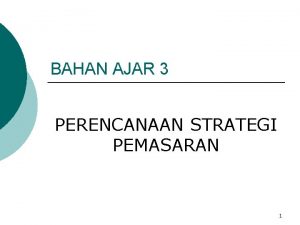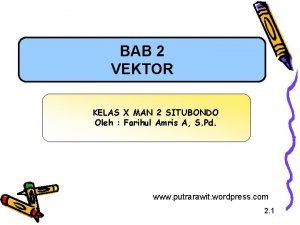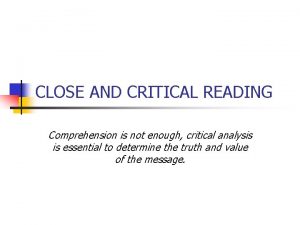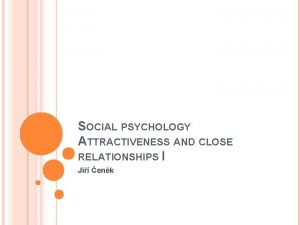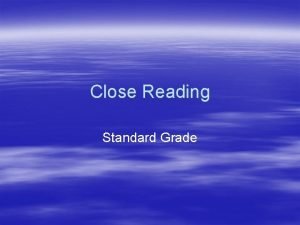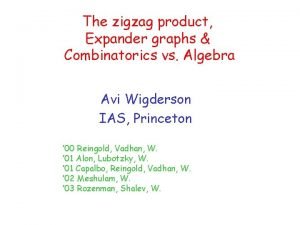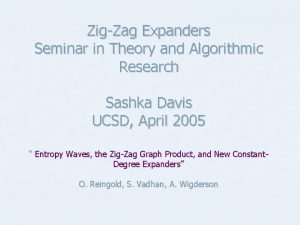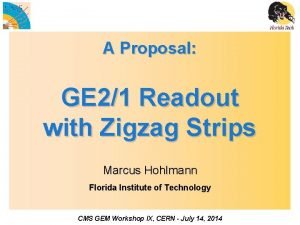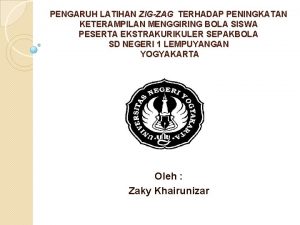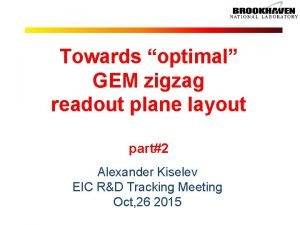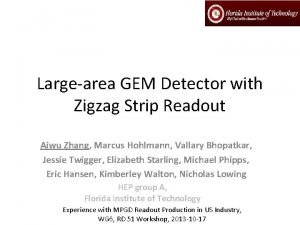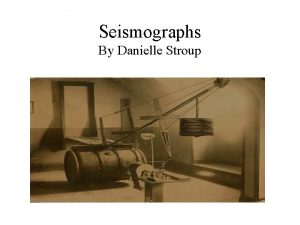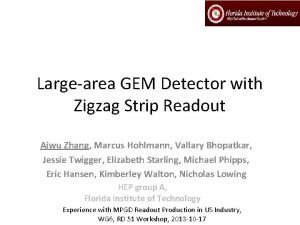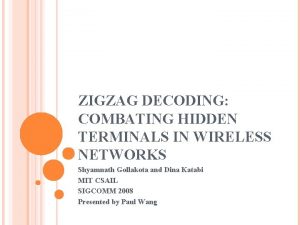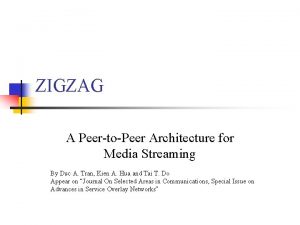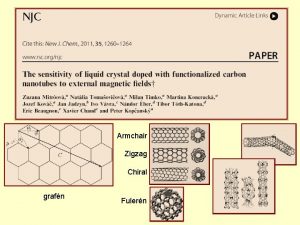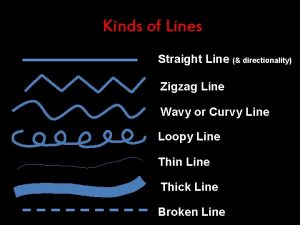The ZigZag Product and Expansion Close to the












![Randomness Conductors [CRVW 02] N M= N S, |S| K prob. dist. S H(S) Randomness Conductors [CRVW 02] N M= N S, |S| K prob. dist. S H(S)](https://slidetodoc.com/presentation_image_h2/87c0905850807cfd29412c364126c652/image-13.jpg)
![Randomness Conductors [CRVW 02] N M= N S, |S| K prob. dist. S H(S) Randomness Conductors [CRVW 02] N M= N S, |S| K prob. dist. S H(S)](https://slidetodoc.com/presentation_image_h2/87c0905850807cfd29412c364126c652/image-14.jpg)

![Our Expander Construction • Starting Point: Zig-Zag Graph Product [RVW 00] Compose large graph Our Expander Construction • Starting Point: Zig-Zag Graph Product [RVW 00] Compose large graph](https://slidetodoc.com/presentation_image_h2/87c0905850807cfd29412c364126c652/image-16.jpg)

![The Zig-Zag Product [RVW 00] z “Theorem”: Expansion (G 1 z G 2) min(Expansion The Zig-Zag Product [RVW 00] z “Theorem”: Expansion (G 1 z G 2) min(Expansion](https://slidetodoc.com/presentation_image_h2/87c0905850807cfd29412c364126c652/image-18.jpg)
![Zig-Zag Analysis (Case I) [RVW 00] Case I: Conditional distributions within “clouds” far fr. Zig-Zag Analysis (Case I) [RVW 00] Case I: Conditional distributions within “clouds” far fr.](https://slidetodoc.com/presentation_image_h2/87c0905850807cfd29412c364126c652/image-19.jpg)
![Zig-Zag Analysis (Case II) [RVW 00] Case II: Conditional distributions within clouds uniform. • Zig-Zag Analysis (Case II) [RVW 00] Case II: Conditional distributions within clouds uniform. •](https://slidetodoc.com/presentation_image_h2/87c0905850807cfd29412c364126c652/image-20.jpg)


![Zig-Zag for Unbalanced Graphs • Second eigenvalue probably not useful. • Extractors [NZ 93] Zig-Zag for Unbalanced Graphs • Second eigenvalue probably not useful. • Extractors [NZ 93]](https://slidetodoc.com/presentation_image_h2/87c0905850807cfd29412c364126c652/image-23.jpg)
![Randomness Conductors [CRVW 02] N M= N S, |S| K prob. dist. S H(S) Randomness Conductors [CRVW 02] N M= N S, |S| K prob. dist. S H(S)](https://slidetodoc.com/presentation_image_h2/87c0905850807cfd29412c364126c652/image-24.jpg)








- Slides: 32

The Zig-Zag Product and Expansion Close to the Degree Salil Vadhan Harvard University joint work with Michael Capalbo (DIMACS), Omer Reingold* (Weizmann), and Avi Wigderson (IAS)

Measures of Expansion • Combinatorial: vertex expansion, large cuts • Algebraic: second eigenvalue • Probabilistic: like randomness extractors almost Thm [. . . ]: All equivalent. This talk: • Optimize vertex expansion. • Analysis of zig-zag with extractor-like measure. • Unified entropy-theoretic view of all measures.

Vertex Expansion N S, |S| K N D | (S)| A |S| • Goals: D small (even constant), A large • Many applications: network design, sorting, complexity theory, cryptography, coding theory, proof complexity

Expander Graphs N S, |S| K N D | (S)| A |S| Q: How large can A be? • Trivial upper bound: A D. • Random graphs: A=D-1. 01 – But many applications need explicit (deterministic & efficient) constructions. • Previously, best explicit expanders: A =D/2 (for constant D and K= (N)).

This Work: Constant-Degree “Lossless” Expanders … which may even be unbalanced: N S, |S| K M= N D | (S)| (1 - ) D |S| 0< , 1 constants D constant & K= (N) For the experts: K= ( M/D) & D= poly(1/ , log (1/ )) (fully explicit: D= quasipoly(1/ , log (1/ )))

Previous explicit constructions • Celebrated sequence of algebraic constructions [Mar 73, GG 80, JM 85, LPS 86, AGM 87, Mar 88, Mor 94, . . . ]. • Achieved optimal 2 nd eigenvalue (Ramanujan graphs), but this only implies vertex expansion D/2 [Kah 95]. • “Combinatorial” constructions: Ajtai [Ajt 87], more explicit and simple [RVW 00]. • “Lossless objects”: [Alo 95, RR 99, TUZ 01] • Unique neighbor, constant-degree expanders [Cap 01].

Why Bother with the Deg. /2 Barrier? • For most applications of expanders: the more expansion the better. • Specific applications for lossless expanders: – Distributed routing in networks [PU 89, ALM 96, BFU 99]. – Expander codes [Gal 63, Tan 81, SS 96, Spi 96, LMSS 01]. – “Bitprobe complexity” of storing subsets [BMRS 00]. – Distributed storage schemes [UW 87]. – Hard tautologies for various proof systems [BW 99, ABRW 00, AR 01].

Properties of Lossless Expanders • At least (1 -2 ) D |S| elements of (S) are unique neighbors: touch exactly one edge from S N M= N S, |S| K x D | (S)| (1 - ) D |S| ü • Fault tolerance: Even if an adversary removes most (say ¾) edges from each vertex, lossless expansion maintained (with =4 )

Outline ü Overview & results • Entropy view of expansion • The original zig-zag product & its limitation • The new zig-zag product for conductors

Entropy View of Expansion N M= N S, |S| K prob. dist. S H(S) k | (S)| A |S| D H(induced dist) H(S)+a (A=2 a, B=2 b, . . . ) • Think of expanders as “entropy increasers” – H(X) = number of bits of “randomness” in X – H(X) log 2|Support(X)| w/equality if X uniform on Support(X) – H(XY)= H(X) + H(Y) if X, Y independent

Entropy View of Vertex Expansion N M= N S, |S| K prob. dist. S H(S) k | (S)| A |S| D (A=2 a, B=2 b, . . . ) • Use: H(X)=log 2|Support(X)| H(S ) H(S)+a

Entropy View of 2 nd E-Value N M= N S, |S| K prob. dist. S H(S) k (A=2 a, B=2 b, . . . ) • Use: • Fact: | (S)| A |S| D H(S ) H(S)+a
![Randomness Conductors CRVW 02 N M N S S K prob dist S HS Randomness Conductors [CRVW 02] N M= N S, |S| K prob. dist. S H(S)](https://slidetodoc.com/presentation_image_h2/87c0905850807cfd29412c364126c652/image-13.jpg)
Randomness Conductors [CRVW 02] N M= N S, |S| K prob. dist. S H(S) k | (S)| A |S| D (A=2 a, B=2 b, . . . ) • Use: • Allow statistical distance on output H(S ) H(S)+a
![Randomness Conductors CRVW 02 N M N S S K prob dist S HS Randomness Conductors [CRVW 02] N M= N S, |S| K prob. dist. S H(S)](https://slidetodoc.com/presentation_image_h2/87c0905850807cfd29412c364126c652/image-14.jpg)
Randomness Conductors [CRVW 02] N M= N S, |S| K prob. dist. S H(S) k | (S)| A |S| D H(S ) H(S)+a (A=2 a, B=2 b, . . . ) • Special Cases: – k+a = m randomness extractors [NZ 93] – a= d lossless expanders [RR 99, TUZ 01]

Entropy View of Expansion N M= N S, |S| K prob. dist. S H(S) k | (S)| A |S| D H(induced dist) H(S)+a (A=2 a, B=2 b, . . . ) • Think of expanders as “entropy increasers” – H(X) = number of bits of “randomness” in X – H(X) log 2|Support(X)| w/equality iff X uniform on Support(X) – H(XY)= H(X) + H(Y) if X, Y independent
![Our Expander Construction Starting Point ZigZag Graph Product RVW 00 Compose large graph Our Expander Construction • Starting Point: Zig-Zag Graph Product [RVW 00] Compose large graph](https://slidetodoc.com/presentation_image_h2/87c0905850807cfd29412c364126c652/image-16.jpg)
Our Expander Construction • Starting Point: Zig-Zag Graph Product [RVW 00] Compose large graph w/ small graph to obtain a new graph which (roughly) inherits – Size of large graph. – Degree from the small graph. – Expansion from both. • Original motivation: A combinatorial construction of constant-degree expanders with simple analysis.

Outline ü Overview & results ü Entropy view of expansion • The original zig-zag product & its limitation • The new zig-zag product for conductors
![The ZigZag Product RVW 00 z Theorem Expansion G 1 z G 2 minExpansion The Zig-Zag Product [RVW 00] z “Theorem”: Expansion (G 1 z G 2) min(Expansion](https://slidetodoc.com/presentation_image_h2/87c0905850807cfd29412c364126c652/image-18.jpg)
The Zig-Zag Product [RVW 00] z “Theorem”: Expansion (G 1 z G 2) min(Expansion (G 2), Expansion (G 1)) – formal versions for 2 nd e-value, extractors [RVW 00]
![ZigZag Analysis Case I RVW 00 Case I Conditional distributions within clouds far fr Zig-Zag Analysis (Case I) [RVW 00] Case I: Conditional distributions within “clouds” far fr.](https://slidetodoc.com/presentation_image_h2/87c0905850807cfd29412c364126c652/image-19.jpg)
Zig-Zag Analysis (Case I) [RVW 00] Case I: Conditional distributions within “clouds” far fr. uniform. – First step on small graph adds entropy. – Next two steps can’t lose entropy.
![ZigZag Analysis Case II RVW 00 Case II Conditional distributions within clouds uniform Zig-Zag Analysis (Case II) [RVW 00] Case II: Conditional distributions within clouds uniform. •](https://slidetodoc.com/presentation_image_h2/87c0905850807cfd29412c364126c652/image-20.jpg)
Zig-Zag Analysis (Case II) [RVW 00] Case II: Conditional distributions within clouds uniform. • First small step does nothing. • Step on big graph “scatters” among clouds (shifts entropy) • Second small step adds entropy.

Inherent Entropy Loss – In each case, only one of two small steps “works” – But paid for both in degree.

Trying to improve ? ? ? Idea: • Use two “optimal” small graphs. • How to measure? ? ? ?
![ZigZag for Unbalanced Graphs Second eigenvalue probably not useful Extractors NZ 93 Zig-Zag for Unbalanced Graphs • Second eigenvalue probably not useful. • Extractors [NZ 93]](https://slidetodoc.com/presentation_image_h2/87c0905850807cfd29412c364126c652/image-23.jpg)
Zig-Zag for Unbalanced Graphs • Second eigenvalue probably not useful. • Extractors [NZ 93] and condensers [RR 99, RSW 00, TUZ 01] work well in unbalanced case. • In fact, [RVW 00] analyzed a zig-zag product for extractors (with an “easier goal”). try to analyze zig-zag for randomness conductors
![Randomness Conductors CRVW 02 N M N S S K prob dist S HS Randomness Conductors [CRVW 02] N M= N S, |S| K prob. dist. S H(S)](https://slidetodoc.com/presentation_image_h2/87c0905850807cfd29412c364126c652/image-24.jpg)
Randomness Conductors [CRVW 02] N M= N S, |S| K prob. dist. S H(S) k | (S)| A |S| D H(S ) H(S)+a (A=2 a, B=2 b, . . . ) • Special Cases: – k+a = m randomness extractors [NZ 93] – a= d lossless expanders [RR 99, TUZ 01]

Outline ü Overview & results ü Entropy view of expansion ü The original zig-zag product & its limitation • The new zig-zag product for conductors

Zig-Zag for Conductors n 1 Start w/lossy conductor G 1 x G 1 d 1 y Goal: make it lossless y’th nbr of x n 1

Zig-Zag for Conductors n 2=O(d 1) n 1 d 2=O(log d 1) G 2 G 1 n 1 d 1

Zig-Zag for Conductors n 2=O(d 1) n 1 d 2=O(log d 1) G 2 G 1 d 1 b 2=O(d 1) d 1 Keep “buffers” to retain lost entropy (remember which edge used) n 1

Zig-Zag for Conductors n 2=O(d 1) n 1 d 2=O(log d 1) G 2 G 1 d 1 b 2=O(d 1) d 1 d 3=O(log d 1) G 3 n 1 m 3<n 2 E 3: 2 nd small conductor • lossless

Analysis of Entropy Flow n 2=O(d 1) n 1 d 2=O(log d 1) G 2 G 1 d 1 b 2=O(d 1) d 1 d 3=O(log d 1) G 3 n 1 m 3<n 2 Case I: Conditional entropy within clouds large.

Analysis of Entropy Flow n 2=O(d 1) n 1 d 2=O(log d 1) G 2 G 1 d 1 b 2=O(d 1) d 1 d 3=O(log d 1) G 3 n 1 m 3<n 2 Case II: Conditional entropy within clouds small.

Summary and Open Problems • Our Result: Constant-Degree Lossless Expanders • Main tools: randomness conductors, zig-zag product Further Research: • • Analyze algebraic expanders wrt conductor measure. The undirected case (being lossless from both sides). Better expansion yet? D-O(1) Continue the study of randomness conductors.
 Python challenge 17
Python challenge 17 Ian frankenburg
Ian frankenburg Drawing skeletal structures
Drawing skeletal structures Indice horaire transformateur
Indice horaire transformateur Zigzag stitch
Zigzag stitch Double rivet lap joint
Double rivet lap joint Single riveted double strap joint
Single riveted double strap joint Abreviatura transformador
Abreviatura transformador Periodic table zigzag line
Periodic table zigzag line Ansoff product market expansion grid
Ansoff product market expansion grid New product development and product life cycle strategies
New product development and product life cycle strategies Marginal product and average product
Marginal product and average product Product line width
Product line width Chapter 3 feasibility analysis
Chapter 3 feasibility analysis Gdp vs gnp
Gdp vs gnp Produk gabungan dua teknologi
Produk gabungan dua teknologi Core product augmented product
Core product augmented product Cross product outer product
Cross product outer product Overview definition
Overview definition Sifat perkalian silang vektor
Sifat perkalian silang vektor Core product augmented product
Core product augmented product Dogld
Dogld Rumus yang menyatakan cross-product adalah
Rumus yang menyatakan cross-product adalah Close and critical reading
Close and critical reading Writing routine and positive messages example
Writing routine and positive messages example Notice and note close reading
Notice and note close reading Block letter style with open punctuation word
Block letter style with open punctuation word What is juncture in linguistics
What is juncture in linguistics Extremely loud and incredibly close summary
Extremely loud and incredibly close summary Close and critical reading
Close and critical reading Close your eyes and imagine
Close your eyes and imagine Physical attractiveness
Physical attractiveness Notice and note strategies
Notice and note strategies
